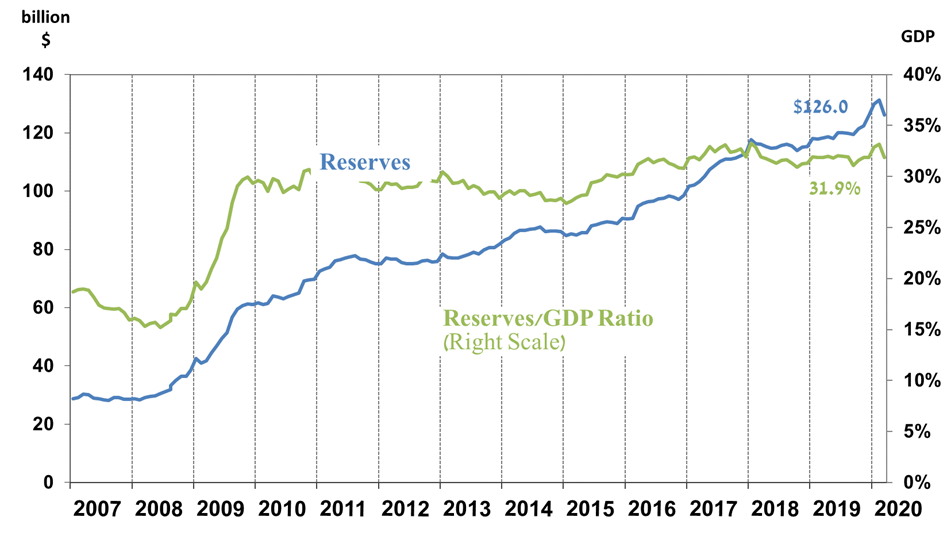Israel’s foreign exchange reserves at the end of March 2020 stood at $126,043 million, a decrease of $5,125 million from their level at the end of the previous month. The reserves represent 31.9 percent of GDP (Figure 1).
The decrease was the result of:
a. An injection of short-term dollar credit totaling $7,500 million into the financial system.[1]
b. A revaluation[2] that decreased the reserves by approximately $2,328 million.
The decrease was partly offset by:
a. Private sector transfers of approximately $2,321 million.
b. Foreign exchange purchases by the Bank of Israel totaling $974 million.
c. Government transfers from abroad totaling approximately $1,408 million.
Israel's Foreign Exchange Reserves ($ million)
|
Date |
Reserves excluding IMF (including reserves bought under the natural gas purchase program) |
Reserves at the IMF[3] |
Total Foreign Exchange Reserves |
|
March 2019 |
116,514d |
1,705 |
118,219d |
|
April 2019 |
117,044 |
1,699 |
118,743 |
|
May 2019 |
116,485 |
1,639 |
118,124 |
|
June 2019 |
118,460 |
1,648 |
120,108 |
|
July 2019 |
118,309 |
1,685 |
119,994 |
|
August 2019 |
118,134d |
1,678d |
119,812 |
|
September 2019 |
117,797d |
1,672 |
119,469d |
|
October 2019 |
119,671 |
1,690 |
121,361 |
|
November 2019 |
120,702 |
1,681 |
122,383 |
|
December 2019 |
124,253d |
1,761d |
126,014d |
|
January 2020 |
128,231d |
1,744 |
129,975d |
|
February 2020 |
129,443d |
1,725 |
131,168d |
|
March 2020 |
124,333 |
1,710 |
126,043 |
Figure 1
Level of foreign exchange reserves, and their ratio to GDP, 2007–20

[1] Within the framework of the swap transactions program that the Bank announced on March 16, 2020 and March 18, 2020.
b Includes Bank of Israel payments and receipts in foreign currency.
c This column includes Special Drawing Rights (SDRs), the balance of NAB loans, and the balance of Israel's reserve tranche at the IMF.
d Updated after the original date of publication.